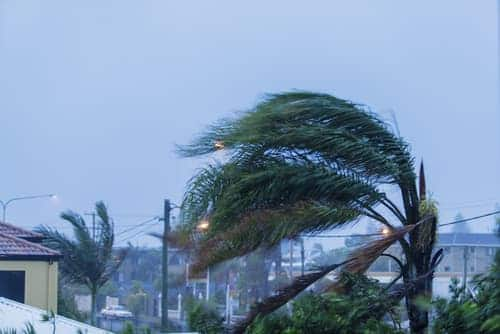How much did home insurance rates increase in 2023?
S&P found that the average home insurance premium increase by the 10 major insurers in its year-end survey was 11.3%. Farmers Insurance Group was the highest with a 19.4% increase in premiums as of December 29, 2023, followed by Liberty Mutual at 17.2%.
Chubb and State Farm had the smallest rate increases at 6.9% and 7.8%, respectively.
It’s a trend that homeowners have had to deal with for some time. Over the past five years, average home insurance premiums have risen by 33.2%. Progressive has had the biggest increase in premiums since 2018 with a cumulative change of 55.3%, followed by Farmers at 54.6%.
State Farm had the smallest change in premiums, with rates going up only 10.5% since 2018, significantly lower than another major insurer, Allstate, which increased premiums by 31.8% over the same period.
Top 10 homeowners insurance company premium increases since 2018
The table below shows how much each company increased rates in 2022 and how much they increased rates in 2023. It also shows the cumulative rate increase since 2022 and since 2018.
| Company | 2022 increase | 2023 increase | 2022-2023 cumulative increase | 2018-2023 cumulative increase |
|---|---|---|---|---|
| State Farm | 2.5% | 7.8% | 10.5% | 13.7% |
| Allstate | 4.3% | 10.2% | 14.9% | 31.8% |
| Liberty Mutual | 10.5% | 17.2% | 29.7% | 43% |
| USAA | 3.4% | 14.7% | 18.6% | 34.7% |
| Farmers | 13.3% | 19.4% | 35.2% | 54.6% |
| Travelers | 6.1% | 10% | 17.1% | 38.7% |
| American Family | 7.9% | 12.2% | 21.8% | 48.4% |
| Nationwide | 8.4% | 10.6% | 20.4% | 41.9% |
| Chubb | 4.8% | 6.9% | 12.1% | 42.8% |
| Progressive | 2.4% | 10.4% | 13.5% | 55.3% |
Source: S&P Global Market Intelligence, rates as of December 29, 2023.
Why are home insurance rates going up?
The drivers behind the steep increases vary from state to state, but there are a few common themes.
The first is inflation. The cost of supplies to repair or rebuild a home and labor have risen. Mark Friedlander, director of communications for the Insurance Information Institute (III), notes replacement costs have increased a cumulative 55% since 2019, far outpacing the Consumer Price Index.
The second factor is a steep rise in reinsurance costs. Reinsurance is the insurance that a carrier like State Farm will purchase from another insurance company to insulate itself from the risk of a major claims event.
Friedlander notes reinsurance costs have risen an average of 40% across the U.S. this year, with some high-risk states, such as Florida, seeing hikes as much as 70% increases for reinsurance.
Other major causes vary more according to natural disasters that may be affecting individual regions. Florida, for example, has been experiencing soaring litigation costs related to insurance claims in addition to the fallout from hurricanes. Texas has experienced a sharp increase in the number and severity of major storms carrying golf-ball size chunks of hail. Louisiana has suffered the familiar aftereffects of hurricanes and flooding.
In all three states, private insurance carriers have taken steps to limit their business or entirely pull out of high-risk areas.
Meanwhile, severe wildfires have been a major cause of rising insurance premiums in several western states; major home insurance companies have pulled back in California.
Where are home insurance rates rising the most?
Homeowners in Texas saw the largest overall jump in rates last year, at a weighted average of 23.3%, according to S&P Global. Arizona followed it at 21.8% and Utah at 20.3%.
In all, 25 states saw double-digit increases in their rates last year. The table below shows the increases in each state since 2018.
| State | 2018 | 2019 | 2020 | 2021 | 2022 | 2023 | 2022-2023* | 2018-2023* |
|---|---|---|---|---|---|---|---|---|
| Countrywide | 3.2 | 2.5 | 3.0 | 3.8 | 6.1 | 11.3 | 18.2 | 33.8 |
| Alabama | 0.7 | 1.9 | 3.4 | 1.9 | 3.6 | 8.9 | 12.8 | 22 |
| Alaska | 1.0 | -0.7 | 0.0 | -0.1 | 1.0 | 5.2 | 6.2 | 6.4 |
| Arizona | 2.4 | 2.6 | 3.5 | 3.9 | 11.2 | 21.8 | 35.4 | 52.9 |
| Arkansas | 2.5 | 1.5 | 1.1 | 4.4 | 4.9 | 14.9 | 20.6 | 32.5 |
| California | 5.3 | 6.3 | 6.9 | 5.8 | 3.2 | 10.0 | 13.5 | 43.7 |
| Colorado | 6.2 | 5.8 | 5.8 | 6.6 | 8.8 | 11.8 | 24.6 | 57.9 |
| Connecticut | 2.6 | 2.6 | 3.4 | 2.5 | 3.4 | 6.9 | 10.6 | 23.4 |
| Delaware | 1.8 | 2.5 | -0.7 | 5.3 | 2.9 | 3.9 | 7.7 | 17.5 |
| District of Columbia | 0.4 | 0.8 | 0.4 | 2.3 | 2.0 | 4.3 | 9.0 | 13.4 |
| Florida | 3.2 | 0.4 | 10.9 | 8.4 | 9.6 | 4.9 | 15.0 | 43.2 |
| Georgia | 4.9 | 3.6 | 2.4 | 3.8 | 4.2 | 5.5 | 9.9 | 27.0 |
| Hawaii | 2.0 | 2.7 | 1.8 | 0.6 | 3.1 | 1.8 | 4.9 | 12.6 |
| Idaho | 2.4 | 2.6 | 2.5 | 2.3 | 4.8 | 12.2 | 17.7 | 29.6 |
| Illinois | 4.1 | 3.6 | 3.5 | 3.6 | 6.4 | 18.5 | 26.1 | 45.8 |
| Indiana | 0.8 | 1.3 | 0.7 | 2.8 | 5.5 | 12.2 | 18.3 | 25.1 |
| lowa | 1.3 | 2.2 | 1.8 | 4.7 | 7.7 | 13.5 | 22.2 | 34.7 |
| Kansas | 2.8 | 2.1 | 2.5 | 4.1 | 4.7 | 8.7 | 13.8 | 27.3 |
| Kentucky | 0.0 | 0.7 | -0.2 | 1.2 | 4.4 | 11.7 | 16.6 | 18.5 |
| Louisiana | 0.6 | 0.0 | -0.9 | 3.6 | 6.5 | 13.7 | 21.1 | 24.9 |
| Maine | 1.7 | 0.5 | 0.9 | 1.1 | 1.2 | 6.0 | 7.3 | 11.7 |
| Maryland | 4.4 | 3.3 | 2.4 | 4.8 | 6.0 | 7.7 | 14.1 | 32.1 |
| Massachusetts | 2.0 | 2.1 | 1.6 | 0.4 | 4.5 | 10.6 | 15.6 | 22.8 |
| Michigan | 1.0 | 0.9 | 1.1 | 1.1 | 3.4 | 10.7 | 15.3 | 19.2 |
| Minnesota | 2.7 | 3.2 | 22 | 4.3 | 6.7 | 15.3 | 23.0 | 39.1 |
| Mississippi | 2.1 | 1.2 | 0.8 | 1.9 | 4.0 | 3.9 | 8.1 | 14.7 |
| Missouri | 4.2 | 2.4 | 1.7 | 2.7 | 6.3 | 8.6 | 15.4 | 28.6 |
| Montana | 3.8 | 1.6 | 4.3 | 4.2 | 6.9 | 9.4 | 17.0 | 34.1 |
| Nebraska | 5.3 | 4.4 | 4.7 | 5.1 | 6.7 | 15.1 | 22.8 | 48.6 |
| Nevada | 3.4 | 3.1 | 2.4 | 3.1 | 1.4 | 6.1 | 7.5 | 21.0 |
| New Hampshire | 2.3 | 1.6 | 1.1 | 0.8 | 4.0 | 7.0 | 11.3 | 17.9 |
| New Jersey | 2.1 | 1.4 | 0.1 | 2.8 | 3.7 | 4.5 | 8.4 | 15.4 |
| New Mexico | 5.0 | 2.9 | 2.7 | 2.8 | 6.6 | 11.4 | 18.8 | 35.5 |
| New York | 1.9 | 2.5 | 1.5 | 2.3 | 3.2 | 6.4 | 9.8 | 19.0 |
| North Carolina | 6.1 | 0.3 | 2.9 | 1.9 | 12.3 | 9.0 | 22.4 | 36.5 |
| North Dakota | 1.7 | 0.8 | 1.3 | 1.4 | 2.4 | 8.1 | 10.8 | 16.6 |
| Ohio | 0.3 | 0.4 | 1.2 | 3.8 | 5.8 | 9.3 | 15.7 | 22.4 |
| Oklahoma | 4.1 | 1.4 | 3.6 | 3.1 | 10.7 | 14.0 | 26.1 | 42.2 |
| Oregon | 3.5 | 2.3 | 1.1 | 5.2 | 10.3 | 16.5 | 28.2 | 44.8 |
| Pennsylvania | -0.3 | 1.1 | 1.0 | 2.4 | 5.0 | 7.0 | 12.3 | 16.9 |
| Rhode Island | 4.4 | 2.9 | 2.8 | 2.8 | 5.1 | 12.1 | 17.8 | 33.7 |
| South Carolina | 0.3 | 0.3 | 0.9 | 0.6 | 2.1 | 4.7 | 6.9 | 9.2 |
| South Dakota | 5.0 | 3.2 | 3.6 | 5.0 | 7.5 | 11.3 | 19.6 | 41.0 |
| Tennessee | 2.0 | 0.8 | 1.4 | 1.8 | 4.6 | 11.0 | 16.1 | 23.2 |
| Texas | 5.4 | 3.4 | 2.3 | 5.1 | 10.6 | 23.3 | 36.4 | 59.9 |
| Utah | 5.2 | 3.4 | 2.4 | 4.3 | 8.5 | 20.3 | 30.5 | 51.9 |
| Vermont | 1.4 | -0.1 | 0.3 | -0.4 | 1.1 | 3.3 | 4.5 | 5.8 |
| Virginia | 5.7 | 2.7 | 3.1 | 3.4 | 4.8 | 10.4 | 15.7 | 33.9 |
| Washington | 3.6 | 2.9 | 2.0 | 2.0 | 3.2 | 14.0 | 17.6 | 30.4 |
| West Virginia | 1.9 | -0.1 | -0.8 | 0.6 | 2.2 | 4.8 | 7.1 | 8.8 |
| Wisconsin | 1.2 | 0.1 | 0.6 | 0.8 | 5.2 | 12.3 | 18.1 | 21.4 |
Note:
Effective rate change – 2018, 2019, 2020, 2021, 2022, Dec. 29, 2023
*Cumulative change – 2022 – Dec. 29, 2023, 2018 – Dec. 29, 2023 2023
Data compiled Jan. 11, 2024, year to date as of Dec. 29, 2023
Source: S&P Global Market Intelligence
Where are insurance rates rising the least?
On the flip side of the equation, a few states have seen almost no or very modest increases. Hawaii homeowners saw only a 1.8% increase in premiums this year.
It was followed by Vermont at 3.3%, and then Delaware and Mississippi, both at 3.9%.
What can a homeowner do to save on home insurance?
Depending on where you live, it may be very difficult to escape seeing a sharp increase in premiums. If you live close to a coast that is often battered by hurricanes and severe storms, live close to a heavily treed area in a parched region, or are in an area that is frequently hammered by hail, it may be next to impossible to escape a steep hike. In some cases, you may not be able to get insurance from a private carrier at all and have to seek out help from a state-sponsored insurer of last resort.
However, even in the face of pending hikes, there are strategies you can use to try to limit the impact and save on home insurance.
The most common way to get a discount is to bundle your home insurance policy and other policies, such as auto and RV, with one carrier. This will usually generate discounts on both policies.
Insurers will also offer discounts for being clams-free for several years, loyalty (being with the same insurer over a number of years), and installing protective devices in the home, such as a centralized fire alarm and monitored burglar system.
If you haven’t done it already, be sure to ask if you can receive a discount for being a member of a trade or professional association, a university alumnus, or other groups such as automobile and service associations.
Another strategy is to consider increasing your deductible. Friedlander says this has been a growing trend and can significantly lower the cost of coverage.
“The downside is the homeowner will be responsible for paying more out of pocket in the event of a covered loss,” he adds.
Finally, shop around. Your current carrier may still offer the lowest rate due to a loyalty discount, but you won’t know until you look around. Online comparison tools can help with this task and Friedlander notes that working with a local insurance agent can also be helpful to gain quotes and analyze your options and possible discounts.
Sources:
- S&P Global Market Intelligence. "US homeowners insurance rates jump by double digits in 2023.” Accessed January 2024.







